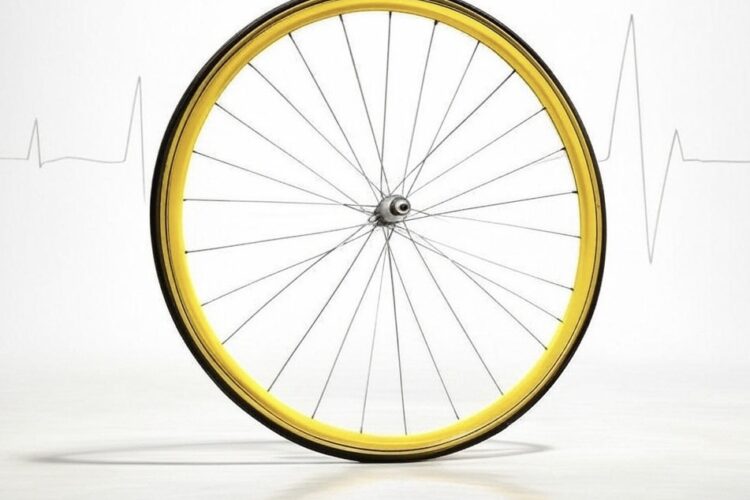Lance Armstrong was once a towering figure in the world of sports—a seven-time Tour de France champion, cancer survivor, and the face of resilience through his Livestrong foundation. His story inspired millions, blending athletic prowess with a triumphant narrative of overcoming adversity. But beneath the accolades and yellow jerseys lay a darker truth: a sprawling doping scandal that would unravel his legacy, strip him of his titles, and redefine the conversation around cheating in professional cycling. This article explores every facet of the Lance Armstrong scandal, from the performance-enhancing drugs that fueled his victories to the USADA investigation that brought him down, offering a comprehensive and authoritative look at one of the most infamous controversies in sports history.
The Rise of a Cycling Icon
Lance Armstrong’s ascent began in the late 1990s, when he joined the US Postal Service cycling team and transformed himself from a promising athlete into a Tour de France juggernaut. Between 1999 and 2005, he won the grueling race seven consecutive times—an unprecedented feat in a sport defined by endurance and strategy. His victories were all the more remarkable given his battle with testicular cancer, diagnosed in 1996. After undergoing surgery and chemotherapy, Armstrong returned to cycling with a renewed vigor, launching Livestrong in 1997 to support cancer research and awareness. The yellow wristbands became a global symbol of hope, and Armstrong a near-mythic figure.
But whispers of doping shadowed his success from the start. Cycling had long been plagued by performance-enhancing drugs, with erythropoietin (EPO), testosterone, and human growth hormone (HGH) among the substances athletes used to boost endurance and recovery. Armstrong, however, maintained a fierce denial, dismissing allegations as jealousy or fabrication. His reputation as a clean athlete held firm—until it didn’t.
The Doping Scheme: EPO, Blood Doping, and Deception
The truth about Armstrong’s victories emerged gradually, revealing a sophisticated doping operation that spanned years. EPO, a synthetic hormone that increases red blood cell production, was central to his regimen. By boosting oxygen delivery to muscles, EPO offered a critical edge in the Tour de France’s punishing mountain stages. Blood doping—transfusing his own stored blood back into his system during races—further amplified his stamina. Teammates later testified that Armstrong also used testosterone and HGH, substances that enhanced strength and recovery, all while evading detection through meticulous planning.
The US Postal Service team, under Armstrong’s leadership, operated like a well-oiled machine. They employed doctors, code names, and clandestine methods to administer drugs and avoid the Union Cycliste Internationale (UCI), cycling’s governing body. Armstrong’s denials grew more vehement as accusations mounted, with lawsuits against critics and whistleblowers reinforcing his image as a wronged champion. Yet cracks appeared as former teammates like Floyd Landis and Tyler Hamilton—both implicated in doping themselves—began to speak out.
The USADA Investigation: Unmasking the Scandal
The turning point came in 2010, when the United States Anti-Doping Agency (USADA) launched a formal investigation into Armstrong and his team. Prompted by Landis’s whistleblower testimony, the probe uncovered a mountain of evidence: eyewitness accounts, financial records, and scientific data showing abnormal blood values consistent with doping. Teammates described Armstrong distributing EPO, orchestrating blood transfusions, and intimidating those who threatened to expose the scheme.
In 2012, USADA released a 1,000-page report that laid bare the extent of the scandal. It described Armstrong’s operation as “the most sophisticated, professionalized, and successful doping program that sport has ever seen.” The report cited 26 witnesses, including 11 former teammates, and detailed how Armstrong enforced a culture of silence and complicity. Facing overwhelming evidence, Armstrong chose not to contest the charges in arbitration—a decision that effectively ended his defense.
The fallout was swift. The UCI, under pressure to act, stripped Armstrong of his seven Tour de France titles and imposed a lifetime ban from competitive cycling. Sponsors like Nike and Oakley dropped him, and he stepped down from Livestrong amid a public backlash. The myth of the invincible champion crumbled, replaced by the reality of a calculated cheat.
The Oprah Interview: Confession and Consequences
On January 17, 2013, Armstrong sat down with Oprah Winfrey for a televised interview that captivated the world. After years of denial, he admitted to using EPO, blood doping, testosterone, and HGH throughout his Tour de France reign. “I viewed it as a level playing field,” he said, acknowledging that doping was pervasive in cycling at the time. The confession was a bombshell, confirming what critics had long alleged and leaving fans grappling with betrayal.
The Oprah interview didn’t absolve Armstrong—it intensified the scrutiny. Legal battles followed, including a $100 million lawsuit from the U.S. government over defrauded sponsorship funds from the US Postal Service. He settled for $5 million in 2018, a fraction of his once-vast fortune. The sanctions and stripped titles cemented his fall, but Armstrong’s apology rang hollow to many who felt his remorse was too little, too late.
The Broader Impact: Cycling, Cancer, and Legacy
The scandal’s ripples extended beyond Armstrong himself. Cycling faced a reckoning, with the UCI implementing stricter anti-doping measures to restore credibility. The sport’s reputation, already tarnished by earlier controversies, took years to recover. Livestrong, meanwhile, distanced itself from its founder but endured lasting damage to its brand. Donations plummeted, though the foundation persists in its mission.
Armstrong’s legacy remains a paradox. To some, he’s a disgraced athlete whose cheating erased his achievements. To others, his cancer advocacy retains value despite his flaws. The debate reflects a broader tension in sports: how to weigh personal failings against public good. Armstrong himself has leaned into this ambiguity, launching a podcast, The Move, where he discusses cycling and his past with a mix of candor and defiance.
Insights and Lessons Learned
The Lance Armstrong scandal offers valuable lessons about the intersection of ambition, ethics, and accountability. It exposed the limits of denial in the face of evidence, the power of whistleblowers like Landis and Hamilton, and the fragility of a reputation built on deception. Scientifically, it highlighted the sophistication of doping—EPO and blood doping were undetectable for years until testing caught up. Culturally, it forced a reckoning with hero worship, challenging fans to reconcile admiration with reality.
For cycling, the scandal was a catalyst for change. The UCI’s subsequent reforms, including biological passports to track blood values, have curbed doping’s prevalence, though not eradicated it. For Armstrong, the lifetime ban and stripped titles serve as a permanent mark—a reminder that even the greatest victories can collapse under the weight of truth.
Conclusion
Lance Armstrong’s story is a cautionary tale of hubris and redemption, a saga that spans Tour de France triumphs, a cancer survivor’s crusade, and a doping scandal that shook the sports world. From the USADA investigation to the Oprah interview, every chapter reveals a man who bent rules to win, only to lose everything when the facade fell. Today, on April 4, 2025, his name evokes both the thrill of those yellow jerseys and the stain of EPO vials hidden in plain sight. The Lance Armstrong scandal isn’t just a cycling controversy—it’s a mirror reflecting the complexities of human ambition, the cost of cheating, and the enduring quest for integrity in sport.






